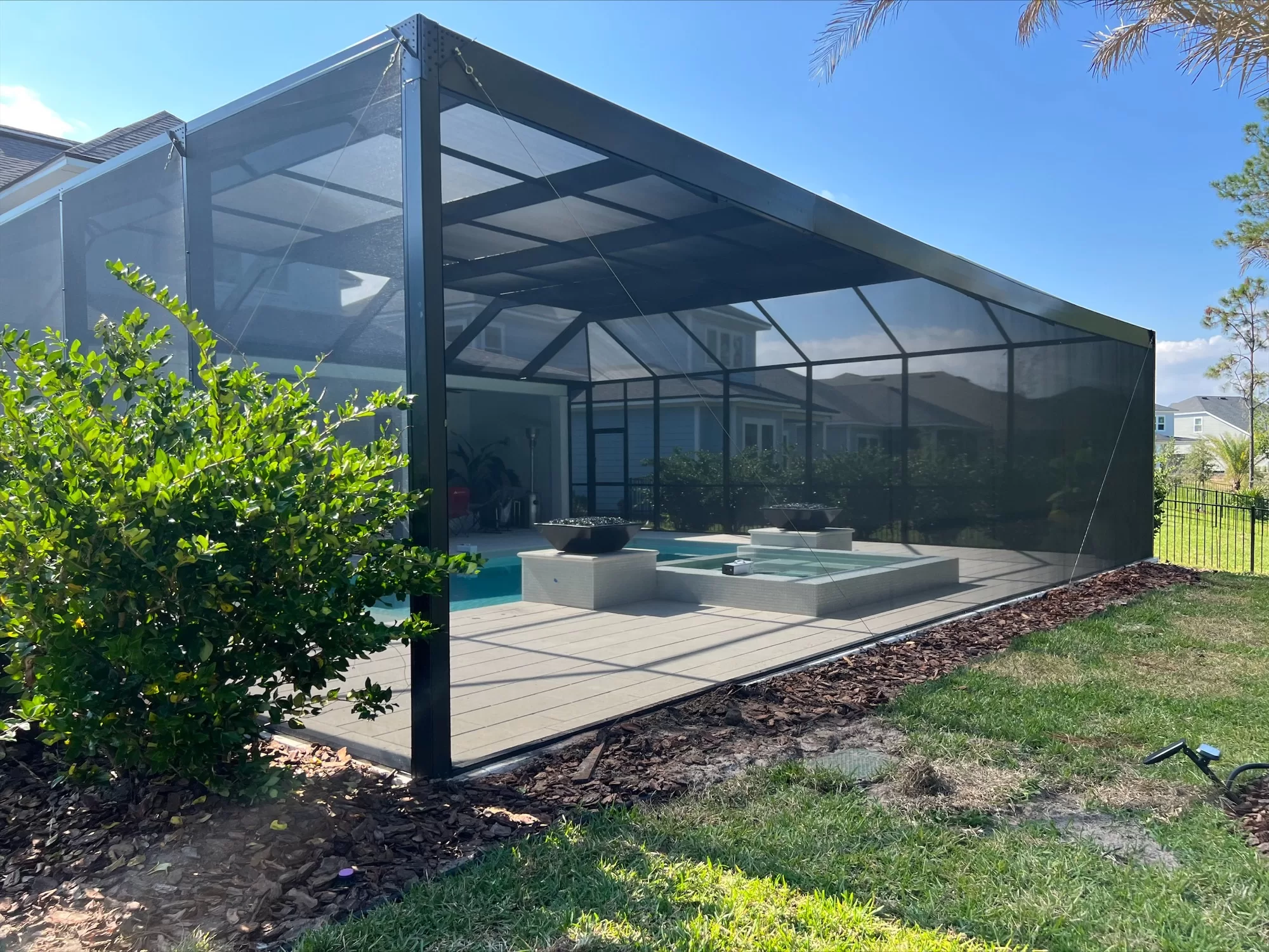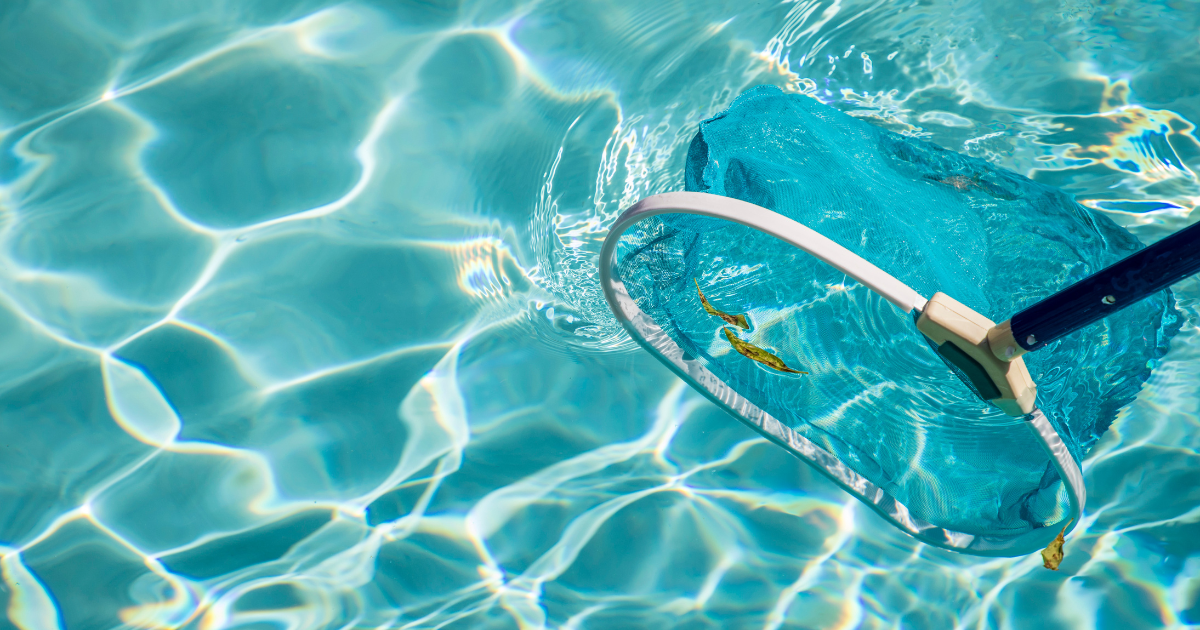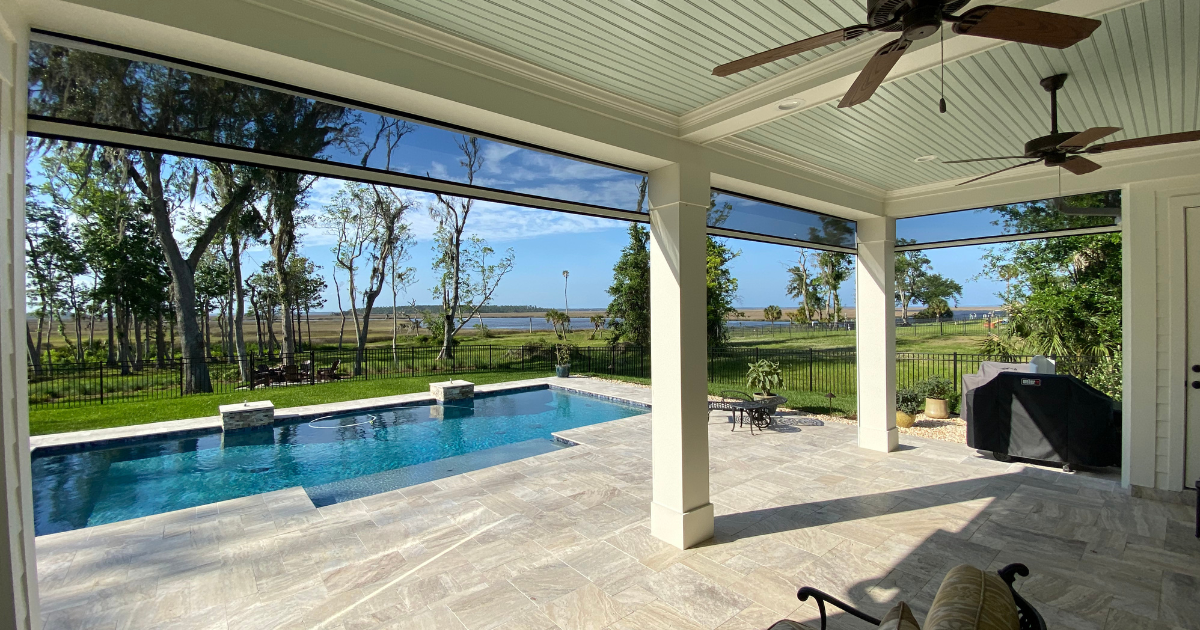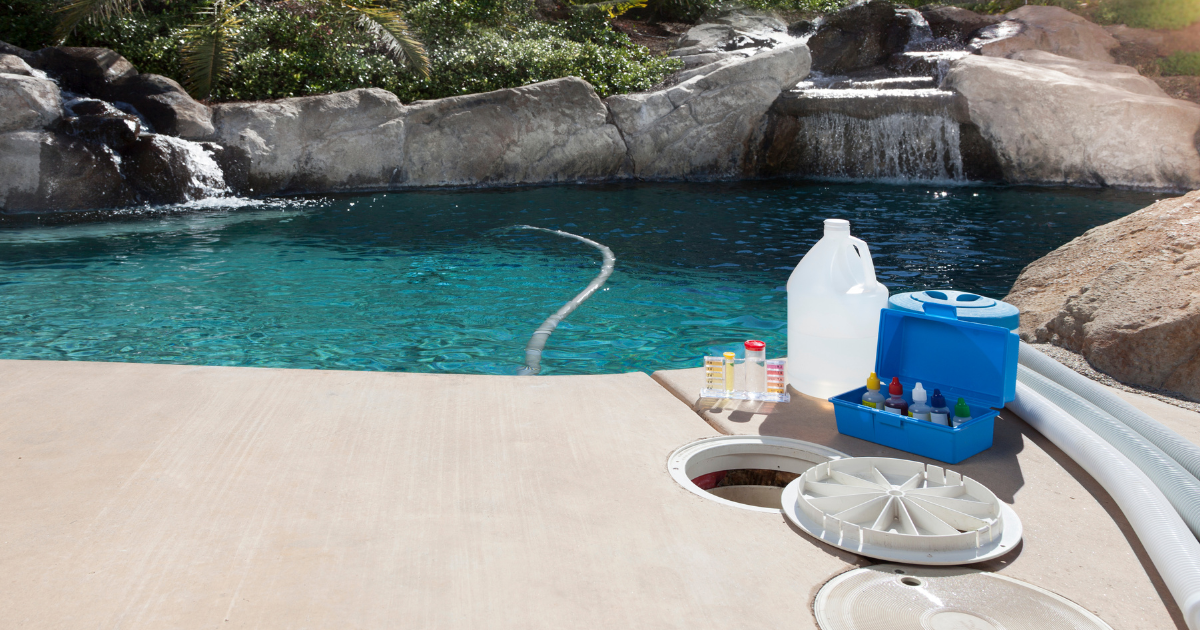Owning a pool can often lead to high maintenance costs if you hire a team and if you opt to do the upkeep yourself, can take up a lot of your time. But, we all know that if you want a clean and healthy swimming pool, proper pool maintenance is an absolute must!
To save you time and resources, we are sharing a complete guide to pool maintenance for beginners.
Pool Maintenance Basics
In a nutshell, there are three main parts of pool maintenance to keep in mind: cleaning, circulation and chemistry. When these three are monitored and maintained, you’re sure to have the crystal clear swimming pool that all the neighbors will envy.

Cleaning
In order to keep your pool guests healthy, it is important to keep your pool clean and clear. One of the best ways to keep this in check is to physically clean it. This can include using nets to fish out leaves and debris, using a brush to clean the side wall in order to prevent algea growth and a vacuum to pick up any debris that may have made it to the bottom of your pool.
Brushing
This is the process of taking a pool brush and manually cleaning where the water meets the walls of the pool. As mentioned before this will prevent any algae from growing on the side walls, but it will also prevent staining and scaling from forming.
Skimming
While your pool most likely has a skimmer, it’s a great idea to use a pool net to skim the surface yourself on a daily basis. Skimming large debris will not only keep pressure off of your skimmer, but will also make for a better looking pool in general! Let’s face it, no one wants to swim in a pool with leaves and bugs floating around the surface.
Vacuuming
Adding to the manual cleaning, your pool vac plays a huge role in removing debris and keeping your filter from running on overload. Running your vacuum once a week can help you keep a clean and beautiful swimming pool!
As you can see, in order to keep your pool looking beautiful for years, these steps are imperative.
While there are automated pool cleaning systems that can help in the process, you will still want to manually skim the surface and brush the edge regularly. The industry standard to keep up with this cleaning is to brush and skim once per day and vacuum the bottom about once a week.
Another good habit to implement is to clean out your skimmer basket about one to two times per week. This will prevent any clogs which can lead to an increased load for your pump.

Circulation
The circulation of your pool is a major part of maintaining that clean water. This circulation will not only prevent stagnant water, but will also prevent algae and other contaminants from building up in the water itself.
Pool Pump
This is where your pool pump comes into play. This pump should run for about 8 to 12 hours per day. While it is running, your water is constantly moving and getting filtered.
In warmer climates it’s a good idea to run your pump slightly longer per day. This can lead to increased maintenance costs, so investing in a variable speed pump will save you money by running at lower speeds during the day.
Skimmer and Jets
In addition to your pump, it is also important to make sure that your skimmer is in proper working order and the jets are pointed in the right direction. The skimmer essentially prevents any debris from getting into the pool pump.
Meanwhile your jets, if pointed away from the skimmer, help create that all important water circulation. This movement makes your skimmer’s job easier and the whole process more efficient.
One more important step when it comes to your pool’s circulation and pump activity is to monitor the pump gauge. If the gauge is ever 10 PSI or more over the starting level, it’s time to backwash your pool pump. Backwashing is a process where the flow of your pump is reversed in order to push all of the dirty water and other build-up to the waste port. This then carries these contaminants out of your pool.
Remember, If any three of these components are impeded, your pool water quality is sure to suffer.

Chemistry
Now for the fun part right? Maybe not, but keeping the chemistry of your pool in check is arguably the most important aspect of pool maintenance. When the chemical levels are balanced and in check, having a crystal clear pool becomes much easier to attain.
The main reason for balancing your pool’s chemicals is to prevent the buildup of harmful bacteria which can lead to cloudy or sometimes green water. The best way to keep an eye on these chemicals is to have a water test kit handy. A test kit can help you monitor these levels and in turn, tell you what you need to do in order to fix an imbalance.

Common Pool Maintenance Chemicals
Here is a quick guide to each chemical’s typical ranges, don’t worry, we’ll keep it simple.
pH
Your pool’s pH should ideally be around 7.5. If the pH is outside this range, you are at risk of experiencing a number of maintenance issues.
Calcium Hardness
Typically for your calcium hardness, you’ll want to be within 200 to 400 parts per million, or ppm. When it is beyond this range, you may end up with calcium deposits, or worse, risk damaging your pool’s finish.
Alkalinity
The alkalinity levels should range from 120 to 150 ppm. If it is ever outside of this range, stains could form or your water could become cloudy.
Chlorine
The CDC recommends that chlorine concentration be at least 1 ppm while hot tubs be at 3 ppm.
Phosphates
A safe level of phosphates for your pool is between 100 to 125 ppm. Too much can foster algae growth and therefore making it much harder to maintain a clean and healthy pool.
If you are looking for some more in-depth information regarding these pool chemicals, check out this article from Pool Research.
Benefits of Installing a Pool Screen Enclosure
One of the greatest benefits of having a screen enclosure over your pool is that it keeps out dirt and unwanted debris, significantly reducing the amount of time needed to manually clean your pool. This alone can help streamline your pool cleaning routine, but are you aware of the added benefits to a screen pool enclosure?
Another reason we advocate for a screen over your pool is to protect you and your family from harmful UV rays. In addition to this, pool enclosures also reduce water and chemical evaporation, making the chemicals last longer all while saving you money!
Interested in a pool enclosure?
Pool Maintenance Tips To Remember
Overall, if you remember the three main components of pool maintenance, cleaning, circulation and chemistry, you’re sure to have a clean and healthy pool in the long run. One of the best tips we can leave you with is to establish a pool cleaning routine. Keeping it on your weekly schedule will ensure that you’re up to date on any cleaning or maintenance your pool will need.
It may seem like a lot to worry about, but just remember to keep your process and routine simple. Owning a pool can be great fun and entertainment for the whole family.
You may think pool maintenance will take up all of your time and keep you bound to your pool net and chemistry set, but researching and creating a process will help you maintain it efficiently. That way you’ll spend more time enjoying your pool and less on maintenance.


